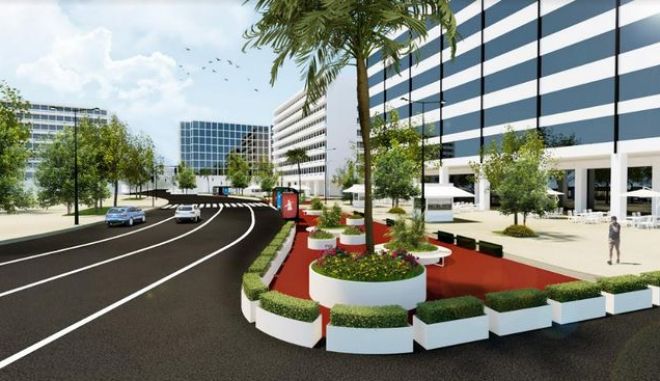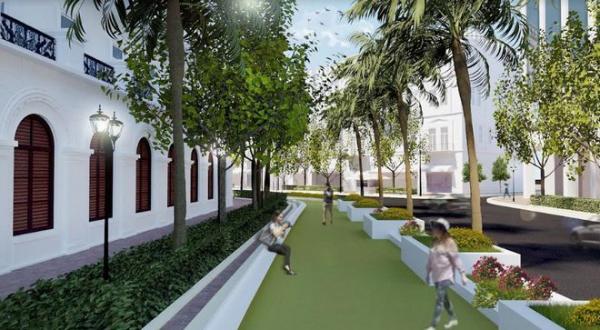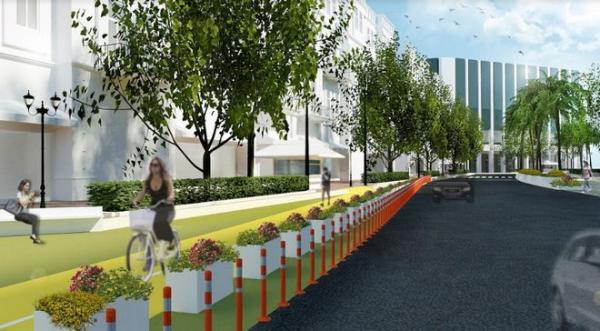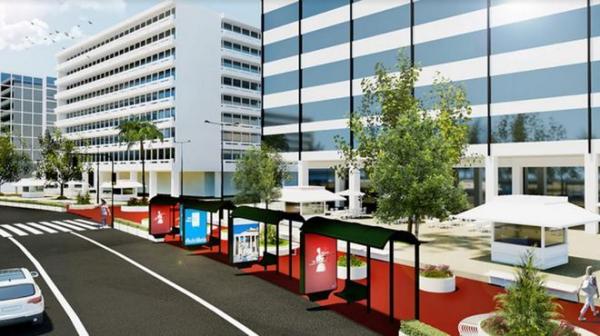
[ad_1]
It begins at the end of the month, one of the largest urban interventions ever made in Athens. The Athens Municipal Council, which met in a video conference, approved the implementation of the “Great Walk of Athens”, with a total length of 6.8 km and which includes the Unification of the Historic Center of the city.
As NTUA professor George Giannis said, presenting the plan to the municipal councilors, with the completion of the project, approximately 50,000 square meters. Free public space for Athens residents and visitors, a new bike path on Panepistimiou Street, the historical areas of Plaka and the Commercial Triangle, but also Herodou Attikou, Mitropoleos, Ermou and Athinas streets will become areas free of private cars.
The pros and cons of early elections: risks and opportunities
Bakoyannis: it is the project that unites the city
This is “a visionary project, which introduces us to Athens from the beginning,” said the mayor of Athens, Costas Bakogiannis, thanking members of the city council who voted in favor.
“It is the project that unites the city”, because “with the Great Walk, the appearance of the city center changes but also our daily life,” he stressed. “It redefines and expands the city center. We are taking step-by-step measures, what we promised: to tear down the capital. To give value to life in the city and demonstrate with it and the other works, that it is important to live this city, not just live in it. ”
He also noted that “it is important that this work begins with consensus, dialogue and cooperation.”
Mr. Bakoyannis noted the innovative pilot nature of the project. “It is a live action project where everyone can participate. Each intervention will be a living core of consultation,” he said. “Together we will judge and redefine it together,” he added.

What is provided
Among other things, the University foresees the pedestrianization of three of the six traffic lanes in total today, a bicycle lane and its aesthetic improvement. Its renovation will produce about 7,000 square meters. in the public space, while the “Trilogy” (National Library – University – Academy of Athens) also stands out.

The intervention will also include Patision, from Omonia to Egypt Square, for the consolidation of the walk with the National Archaeological Museum. On Vasilissis Olgas street, Zappeion joins the Temple of Olympian Zeus, while Dionysiou Areopagitou is connected to Panathinaiko Stadium and Ardittos Hill, maintaining the tram line. V. Olga’s pedestrian street will create about 10,500 square meters, a new public space.
Herod Atticus is turning into a motorway by car. Only emergency vehicles and residents will have access to the road. The renovation of Herodes Atticus will produce about 5,000 square meters. in the public space.

Ermou Street to Ag. Asomaton and Athinas Street will become car-free streets. with the exception of emergency vehicles, residents and hotels. Bus traffic will only be on fixed routes.
The private car free area becomes Plaka, the Metropolis and the Commercial Triangle, with the exceptions of previous vehicles. For Syntagma Square, the plan includes expanding the sidewalks on Filellinon Street to square height, to create a new common area in the heart of the city.
Finally, in the Theater, Justice and Korai squares, important local interventions for its restoration are launched, while in the second year, the plan contemplates the implementation of the connection of the Walk with Plato’s Academy.
Which factions supported the project?
The “Open City” faction voted in favor of the project. Its rapporteur, Costas Alexiou, stressed that the positive aspects are the low cost of implementing the plan, the pilot nature that will be re-evaluated if necessary, the fact that it gives space to pedestrians, etc. However, questions arise about land uses, which As he emphasized, they should not change. Another drawback is the “risk of tourism in the area and the entry of the Athenians a second day.”
The “Athens is you” faction also expressed support. Its boss, Pavlos Geroulanos, characteristically said that Athens is one of the most neglected cities and many proposals for the plan date back to the 1970s, but were not implemented because they were reacting to unions. He also demanded that there be no changes in land use, and that the “Trojan Horse” project not be promoted to promote such changes.
He also described the plan as an important opportunity for wide access for people with disabilities. The leader of the “Athens and Athens Again” faction, George Voulgarakis, was also in favor, noting, however, that other complementary studies would be required, such as the relationship of people to the environment, buildings, etc. “In any case, it is an opportunity to take the first step,” he said.
The leader of the “Athens is our home” faction, Vassilis Kapernaros, voted yes at first, but requested continued information from the city council on the project.
The groups “People’s Rally”, “Athens for Greece”, “Rebellion in the Neighborhoods of Athens” and “Anti-Capitalist Overthrow Athens” withdrew from the meeting, demanding that the issue be discussed in a regular and non-extraordinary meeting of the municipal Council. The “Greek Dawn for Athens” faction also abstained.
Incredible: A 19-year-old boy in Canada was driving 308 kilometers per hour
[ad_2]